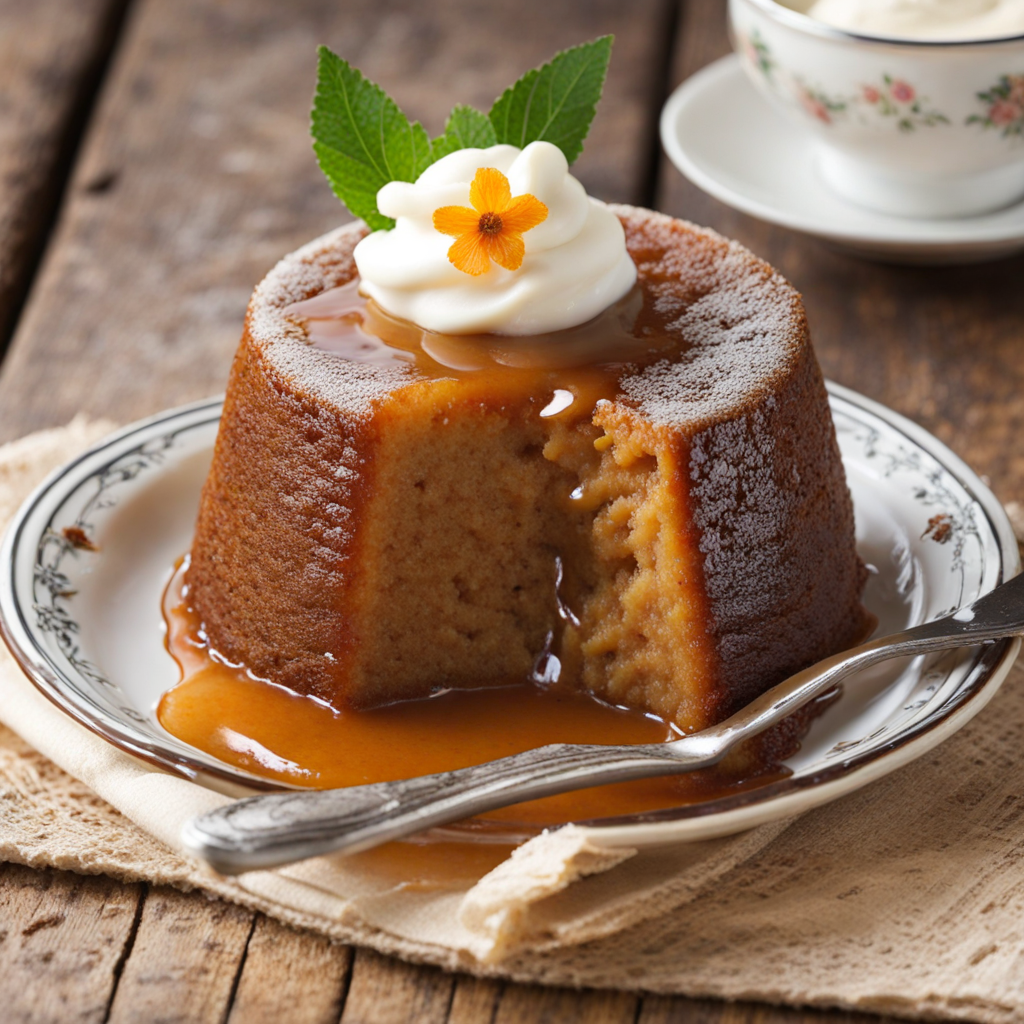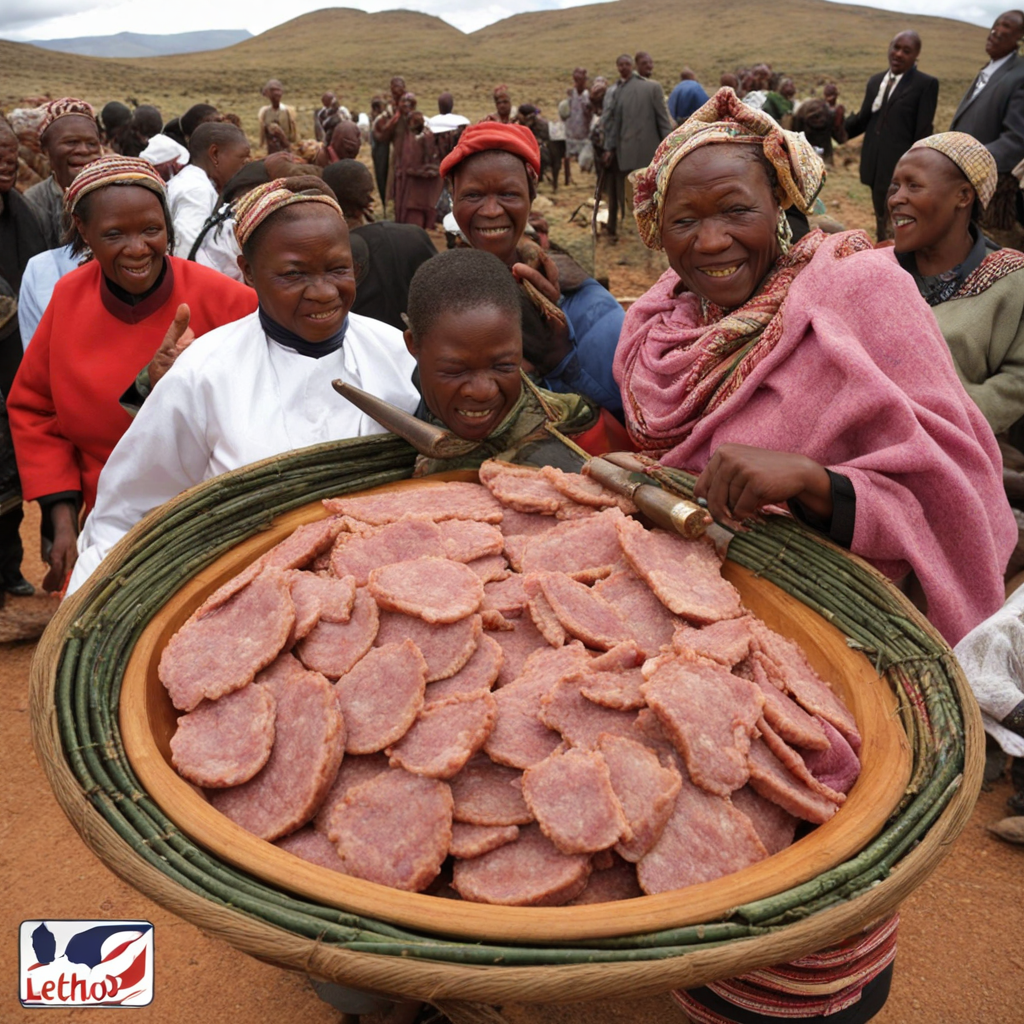Milk Tart
Milk Tart, or 'Melktert' as it is known in Afrikaans, is a traditional dessert from Lesotho that embodies the essence of comforting, homemade goodness. This delightful tart features a creamy custard filling made primarily from milk, sugar, and eggs, which is thickened with cornstarch to achieve a silky-smooth texture. The custard is often infused with a hint of vanilla or cinnamon, offering a warm, aromatic undertone that elevates the overall flavor profile. Encased in a buttery, flaky pastry crust, each bite reveals a harmonious blend of sweetness and subtle spice, making it an irresistible treat for dessert lovers. The preparation of Milk Tart is a celebration of simplicity and tradition, often enjoyed during family gatherings and festive occasions. The tart is typically baked until the custard is set and the crust is golden brown, creating an inviting contrast between the crisp exterior and the creamy filling. A dusting of cinnamon or nutmeg on top not only adds visual appeal but also enhances the aroma, inviting you to indulge in its lusciousness. This dessert is best served chilled, allowing the flavors to meld beautifully, resulting in a refreshingly light yet satisfying experience. For those seeking to explore new culinary horizons, Milk Tart offers a unique taste of Lesotho's rich cultural heritage. Its delightful balance of sweetness and creaminess makes it a versatile dessert, appealing to both young and old. Whether enjoyed as a standalone treat or paired with a cup of tea or coffee, Milk Tart embodies the warmth of home and the joy of sharing delicious food with loved ones. Discovering this delightful dessert will surely broaden your palate and introduce you to the charming flavors of Basotho cuisine.
How It Became This Dish
Origin of Melktert Melktert, translating to "milk tart" in English, is a beloved dessert that hails from the Southern African region, particularly from Lesotho. The tart is characterized by its creamy custard filling made primarily from milk, sugar, flour, and eggs, nestled within a sweet pastry crust. Its roots can be traced back to the colonial era when Dutch settlers brought their culinary traditions to the region, melding them with local ingredients and cooking practices. The result was a unique dessert that has become a staple in Basotho cuisine. The use of dairy in Melktert reflects the pastoral lifestyle of the Basotho people, who have historically relied on livestock for sustenance. Cattle, goats, and sheep are integral to their culture, providing not only meat and wool but also milk. This reliance on dairy products is evident in many traditional Basotho dishes, including Melktert, which showcases the versatility of milk as a key ingredient. \n Cultural Significance Melktert is more than just a dessert; it is a symbol of hospitality and community in Lesotho. It is often served at celebrations, family gatherings, and important events such as weddings and birthdays. The act of sharing Melktert with guests signifies warmth and generosity, embodying the Basotho's strong cultural values of togetherness and familial bonds. In many Basotho households, preparing Melktert is a communal activity, where family members come together to create this cherished dish. The process involves making the pastry from scratch, which is a skill passed down through generations. This tradition not only preserves the culinary heritage of Lesotho but also strengthens family ties and fosters a sense of belonging among community members. \n Development Over Time As Lesotho has evolved, so has Melktert. While the traditional recipe remains popular, modern variations have emerged, influenced by globalization and changing culinary trends. Some chefs have begun to experiment with flavors, incorporating local ingredients such as maas (fermented milk) or seasonal fruits like peaches and berries into the custard filling. These innovations reflect a growing trend toward fusion cuisine, where traditional dishes are adapted to suit contemporary palates. The popularity of Melktert has also transcended national borders, finding its way into South African cuisine and beyond. In South Africa, it is often featured at food festivals and is celebrated for its comforting flavors. The dish embodies the shared culinary heritage of the region, bridging cultural divides and fostering a sense of unity among the diverse populations of Southern Africa. \n Melktert in Contemporary Cuisine Today, Melktert is not only a beloved home-cooked dessert but also a prominent feature in restaurants and cafes throughout Lesotho and South Africa. Many establishments take pride in their unique takes on the classic recipe, offering variations that cater to diverse dietary preferences, including gluten-free and vegan options. This adaptability ensures that Melktert remains relevant in a rapidly changing culinary landscape. In addition to its presence in restaurants, Melktert has found a place in the realm of social media and food blogs, where foodies and home cooks share their interpretations and tips for making the perfect tart. This digital exposure has helped to elevate the dish, gaining recognition beyond its traditional roots and encouraging a new generation to appreciate and create Melktert. \n Melktert and Globalization The globalization of food has influenced how Melktert is perceived and enjoyed. With the advent of the internet and social media platforms, recipes for Melktert have been shared widely, allowing individuals from various backgrounds to experience this unique dessert. This exchange of culinary knowledge fosters appreciation and understanding of Basotho culture among international audiences. Furthermore, the rise of food tourism has led to greater interest in traditional dishes from Lesotho. Tourists seeking authentic cultural experiences often look for opportunities to taste local cuisine, making Melktert a sought-after delicacy. This interest not only contributes to the local economy but also encourages the preservation of culinary traditions, as communities recognize the value of their food heritage in the global market. \n Conclusion In summary, Melktert stands as a testament to the rich culinary history of Lesotho, embodying the spirit of community, hospitality, and cultural pride. From its humble origins to its modern adaptations, Melktert continues to capture the hearts and palates of those who encounter it. As it evolves to meet contemporary tastes while holding onto its traditional roots, Melktert remains an enduring symbol of Basotho identity and a delicious part of the broader tapestry of Southern African cuisine.
You may like
Discover local flavors from Lesotho







